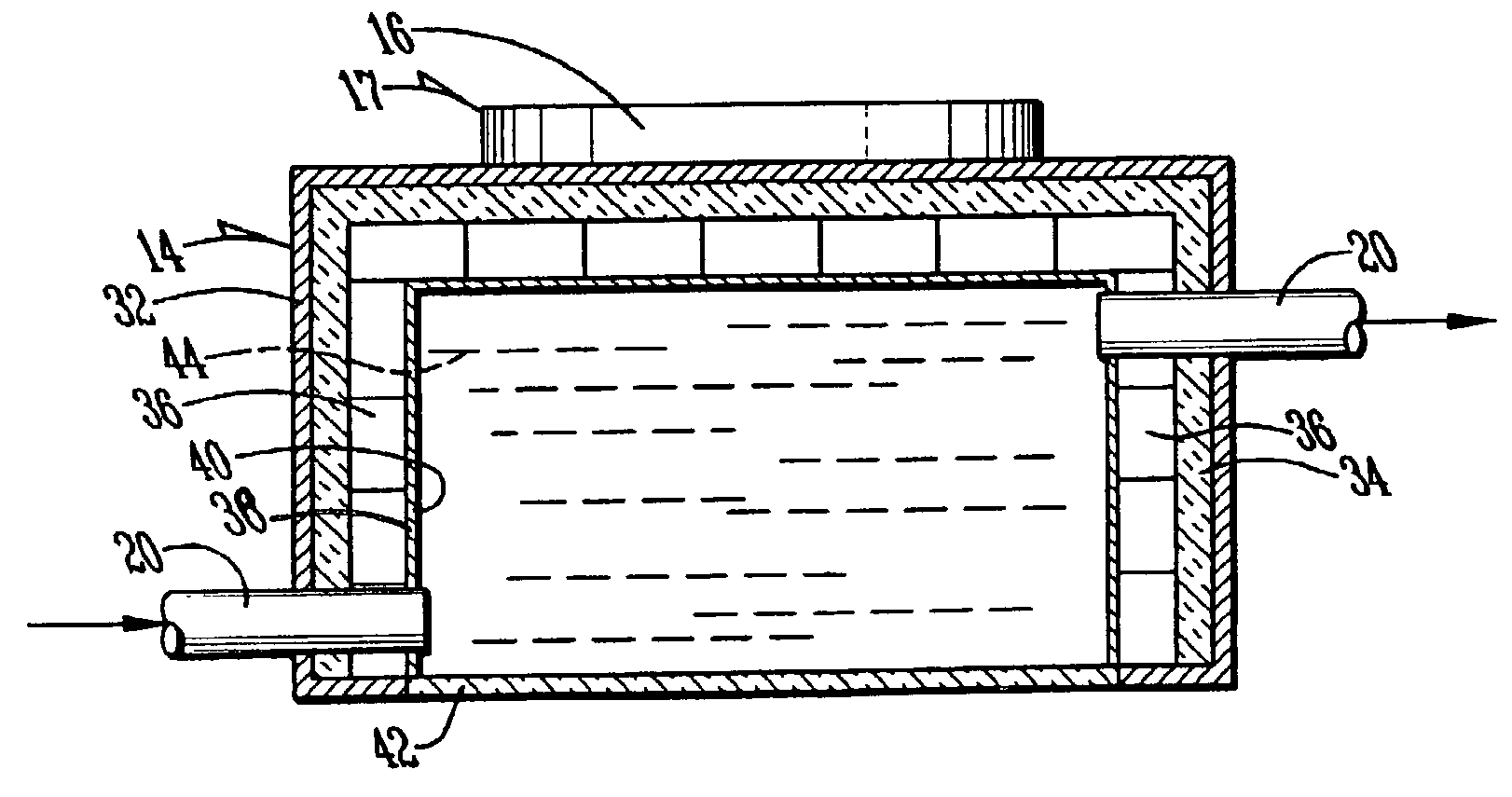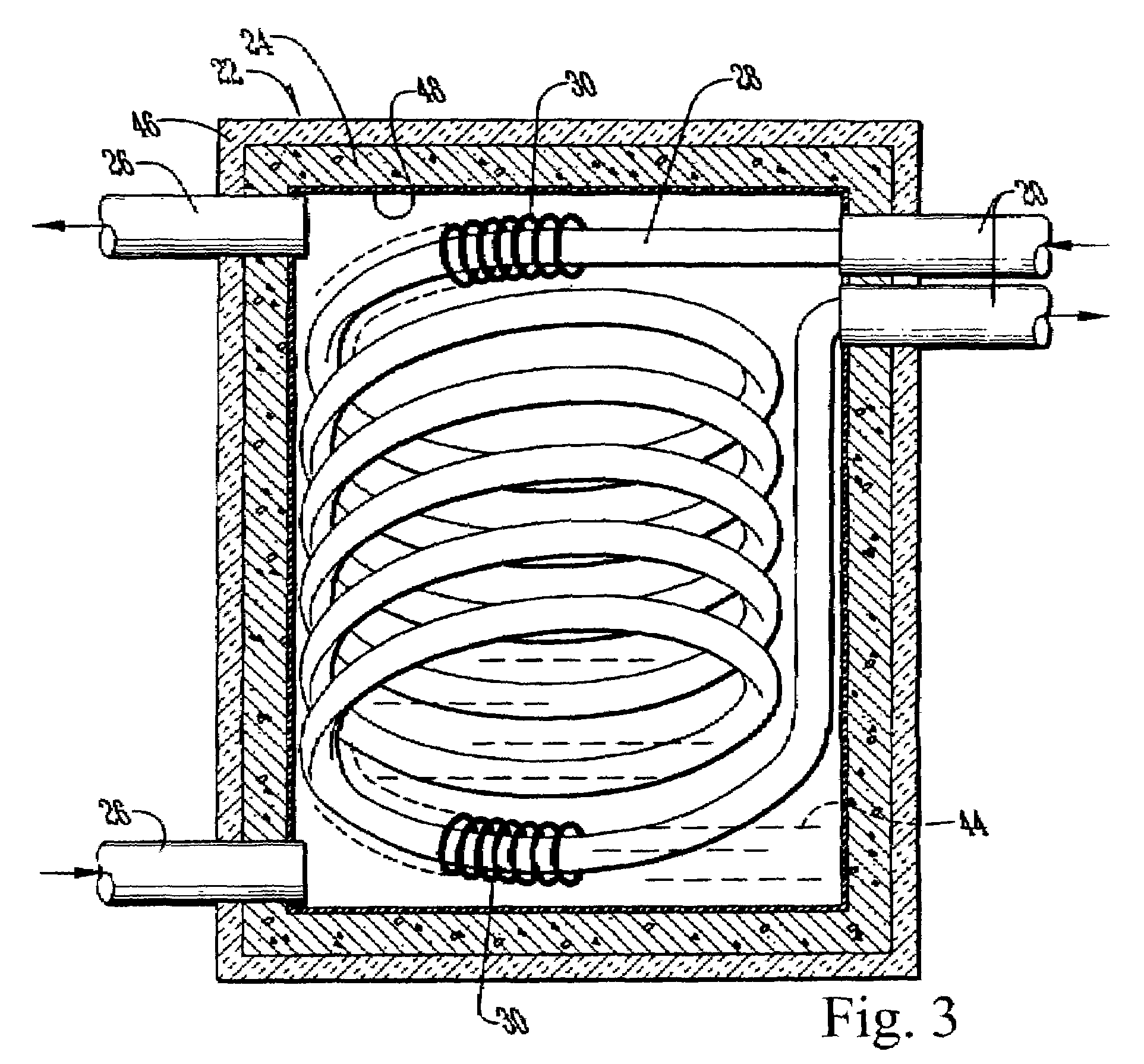Solar co-generator
a co-generationerator and solar energy technology, applied in the field of solar co-generationators, can solve the problems of inability to create re-absorption efficiency losses and heat loss of transfer fluids, and achieve the effects of improving conversion efficiency, improving energy conversion efficiency, and increasing photovoltaic efficiency
- Summary
- Abstract
- Description
- Claims
- Application Information
AI Technical Summary
Benefits of technology
Problems solved by technology
Method used
Image
Examples
Embodiment Construction
[0030]With reference to FIG. 1, a preferred embodiment of the present invention may be described. A solar concentrator 10 is mounted on tracking system 12 in a suitable location to receive sunlight. Solar concentrator 10 in the illustrated embodiment is of the parabolic dish type. The interior of solar concentrator 10 is coated with a reflective material, such as aluminum foil, or the concentrator 10 may itself be formed of a reflective material. Alternative shapes for solar concentrator 10 may include other three-dimensional (or point-type) systems, two-dimensional (or linear-type) systems, such as a Fresnel lens, or any of the various other concentrator types that are known in the art.
[0031]The embodiment is ideally placed in a location that has a direct line of sight to the sun during a significant portion of the day. Tracking system 12 makes it possible for concentrator 10 to follow the sun as it progresses across the sky during the day. Such tracking systems may take many diffe...
PUM
 Login to View More
Login to View More Abstract
Description
Claims
Application Information
 Login to View More
Login to View More - R&D
- Intellectual Property
- Life Sciences
- Materials
- Tech Scout
- Unparalleled Data Quality
- Higher Quality Content
- 60% Fewer Hallucinations
Browse by: Latest US Patents, China's latest patents, Technical Efficacy Thesaurus, Application Domain, Technology Topic, Popular Technical Reports.
© 2025 PatSnap. All rights reserved.Legal|Privacy policy|Modern Slavery Act Transparency Statement|Sitemap|About US| Contact US: help@patsnap.com



